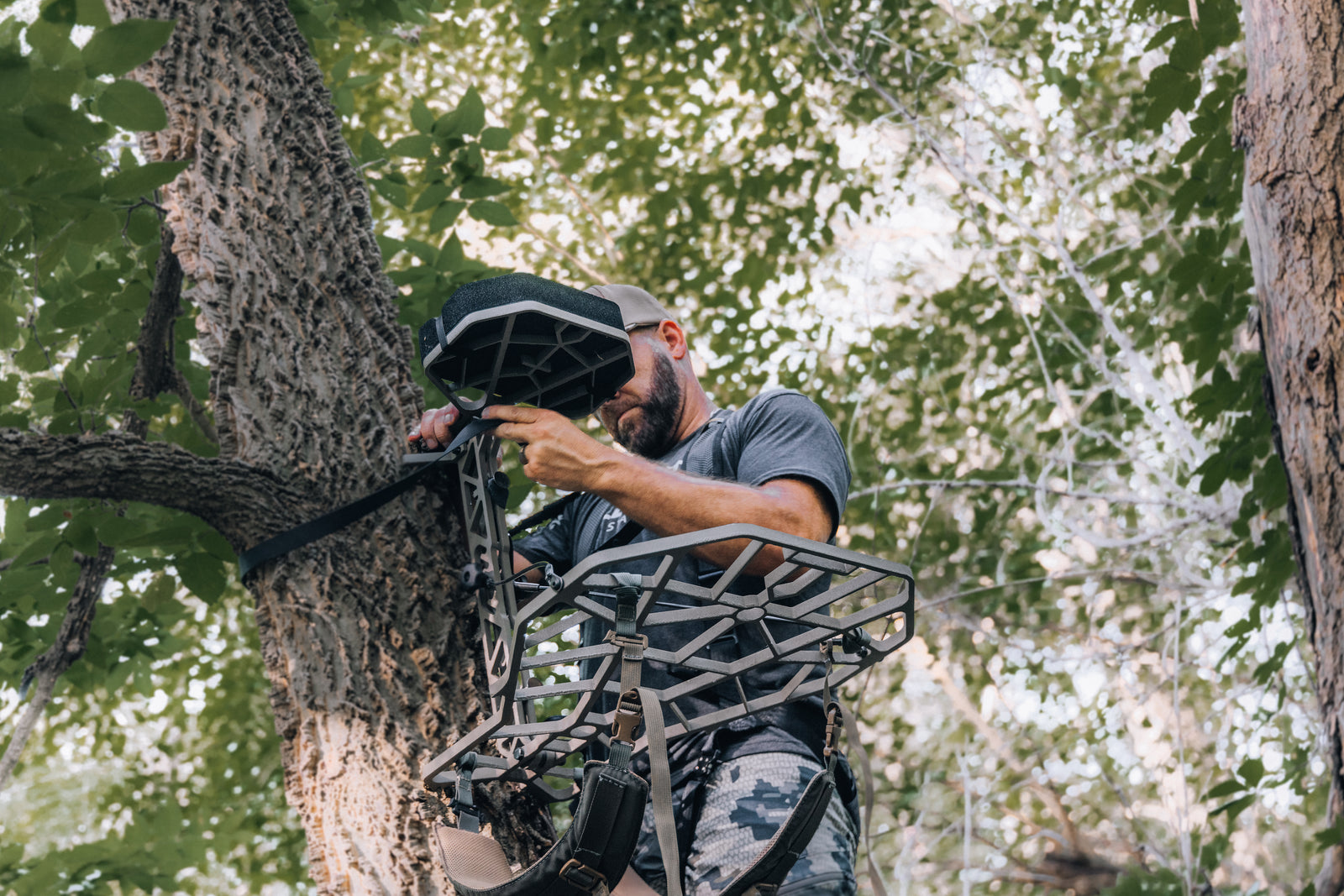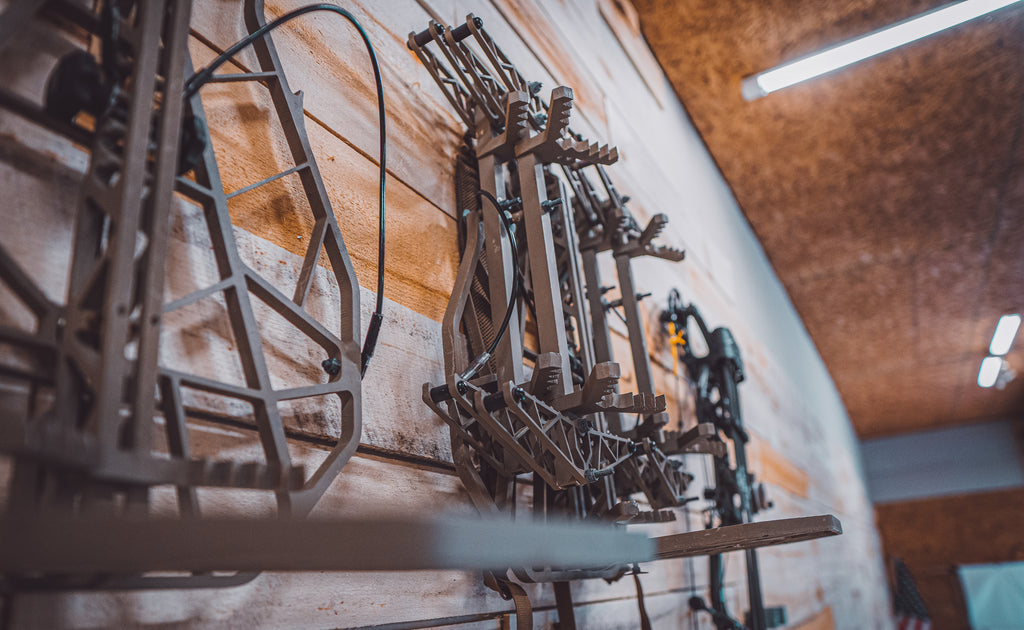Hang and Hunt for Whitetail Deer

The term “Hang and Hunt” has become a mainstay in the whitetail hunting community over the past 15-20 years. The number of hunters that have the knowledge, determination and proper gear for this concept have greatly increased to the point that this hunting strategy is commonplace, especially for bowhunters. Now let’s be clear, deer hunters have packed in treestands on public land, set them up, and hunted from them for much longer than 15-20 years. Private landowners have moved treestands, immediately hunted from them, and harvested big bucks based off timely knowledge of a deer’s current habits. These situations could both be labeled as hang and hunts, but to us there’s a few differing factors that define the new age meaning of a hang and hunt.
The New Age Hang and Hunt
The two biggest elements of this idea are the long distances hunters are now able and willing to pack into the location they are wanting to hunt and the strategic setup as it relates to extremely close proximity to where a mature buck is expected to be bedding. We’re talking about the bowhunter that ventures one or two miles from the truck and sneaks within 50-100 yards of a known buck bedding area to pull off the harvest of a pressured, mature whitetail. This is not an easy task, and it never will be but with the knowledge and gear that hunters possess today, it’s more doable than ever. Legendary bowhunters have done this type of thing for years, but those individuals were a very rare breed and well ahead of their time. There is so much more information available to hunters today that has led more and more of them to take on a hang and hunt strategy. This combined with the availability of better quality gear makes it more realistic than ever.

Scouting and Location
A hang and hunt can be deployed in several hunting situations but in this case lets talk about the public land bowhunter. The first key to a successful hang and hunt is acquiring the intel that clues you into the proper hunting location. This is done with offseason scouting on foot, map study, trail cameras and most likely in-season scouting as you push further from the parking lot and further from human pressure. The offseason is a crucial time for public land bowhunters. This is a great opportunity to get out on foot and explore different tracks of land without worrying about disturbing deer and other hunters. Take this time to study topographic maps, walk the terrain and learn specific areas that deer like to bed, travel and feed. Deer patterns will certainly change come hunting season due to the rut and hunting pressure but gaining a good general understanding in the offseason puts you well ahead of the game. Assuming it’s legal on the public ground you’re exploring, deploy trail cameras as you scout leading into the hunting season. There’s no better scouting tool than a trail camera, which will undeniably greatly speed up your learning curve on any given property.
Many hunters that hang and hunt will tell you that some of their best scouting occurs during the hunting season. They’ve tried certain areas that appeared promising in the offseason but due to changing deer patterns and hunting pressure, those areas have dried up. This is when it’s time to get mobile and deploy the true hang and hunt strategy. Push further into properties and don’t be satisfied with marginal deer sign. Keep moving until you find that key area that is torn up with tracks, rubs, scrapes, and nearby thick bedding. This doesn’t exist on every property, but you certainly won’t find it if you don’t look.

Proper Equipment
Once you’ve scouted and put in the time before and during the season to locate hot areas that are worthy of a hang and hunt, it’s time to make sure you have the right equipment. A good treestand, set of climbing sticks, and backpack are the absolute key to an effective hang and hunt. Even more important is how those three tools work together as a system.
An extremely lightweight treestand that marries well with a set of stacked climbing sticks is essential for a comfortable hike and a stealthy setup and takedown. Whether you use a pack, or your stand has shoulder straps, a comfortable carry that weighs more on your hips versus your shoulders will make for a much less painful journey in and out of your hunting location. Just as important as the hike in and out, a treestand and climbing sticks that are quickly and easily setup is another high priority. Climbing sticks with a sticky grab to the tree and a simple tiedown will get you up to your desired height safely and in quick order. The treestand should allow you to quietly lock it to the tree in the preferred spot for the best shot opportunity. Keep in mind, all of this is often done within close proximity to a bedding area and/or in the dark during a morning hunt. The importance of a treestand and climbing stick system that is quiet and easily setup can’t be stressed enough.

If you’re new to the hang and hunt strategy a great tip is to practice the process at home. First, dial in your system for packing in and out. Carry the stand and sticks around the house to see how it feels and how easily you can pack and unpack your gear. Find a tree in your backyard and go through the task of setting your climbing sticks, your stand, and other components of the setup. This can shave time and make you much more comfortable when you’re in the field, tired after a long walk, and potentially battling low light conditions.
If a hang and hunt is something that could increase your chances of harvesting a whitetail in the areas that you hunt the key is to simply go do it. It’s something that takes practice and patience but the more you prepare and the more you execute the process, the better you will become. The information and gear are available to you in this day and age of hunting so if you’re ready, try your first hang and hunt this fall.





Leave a comment